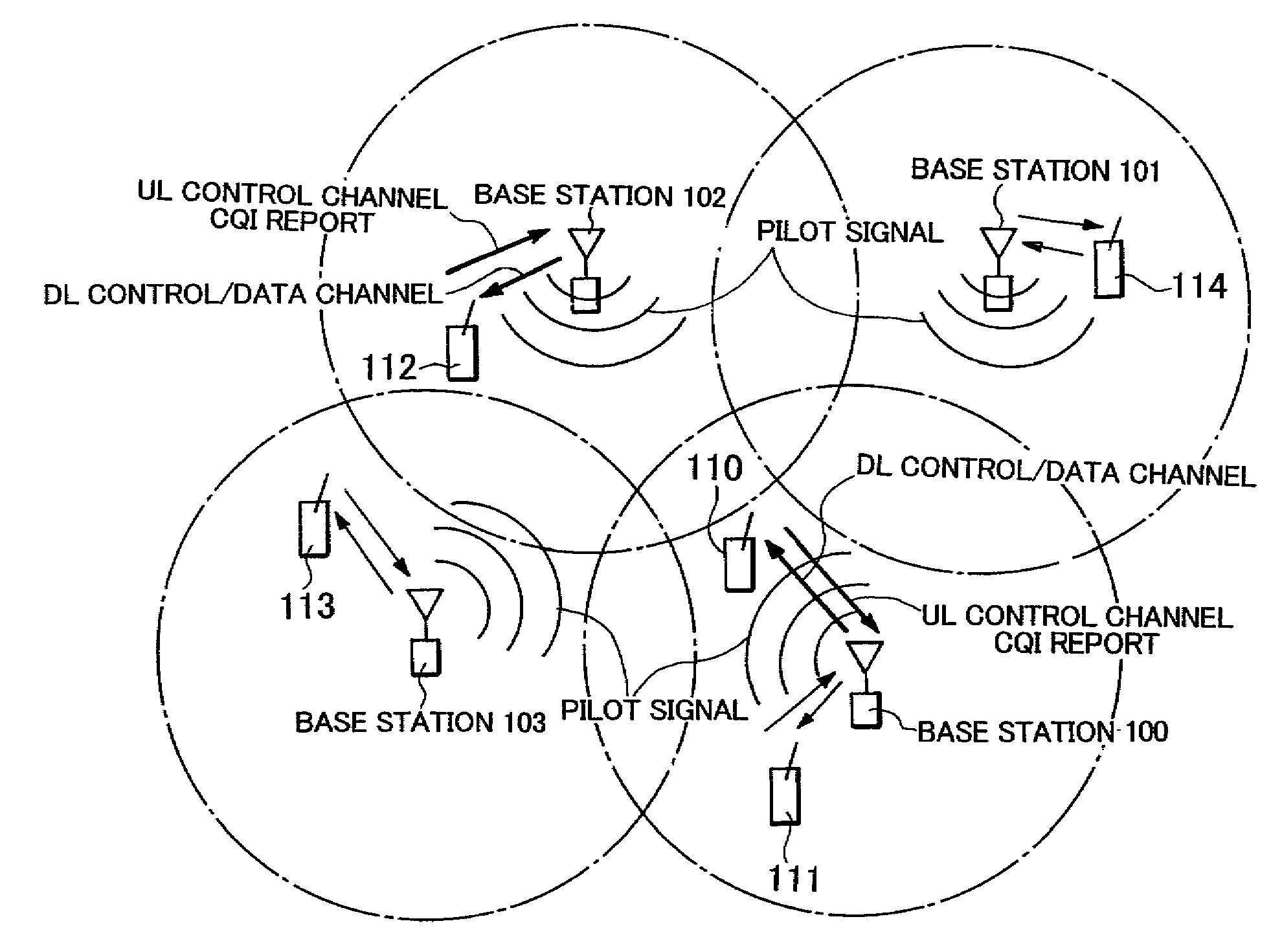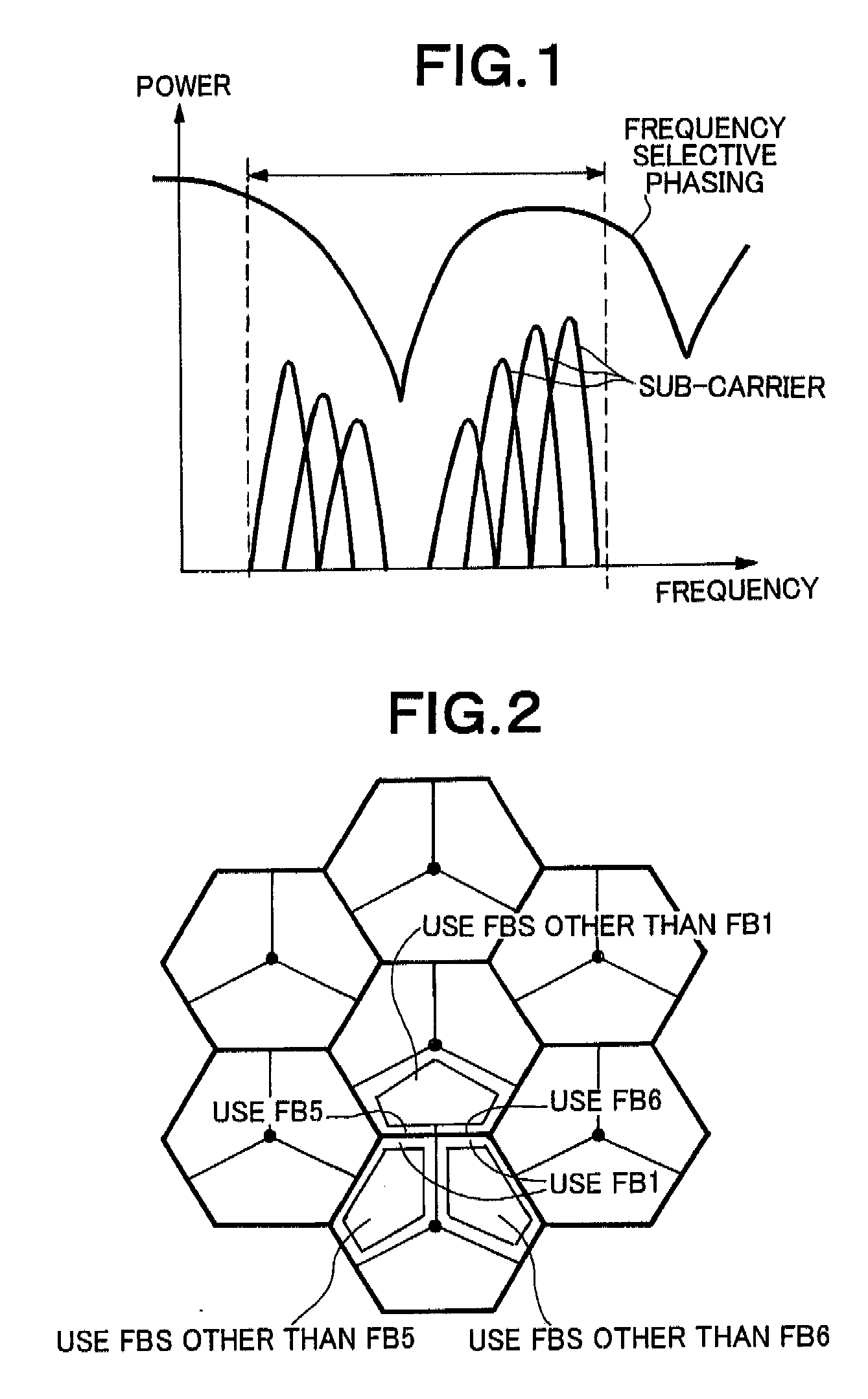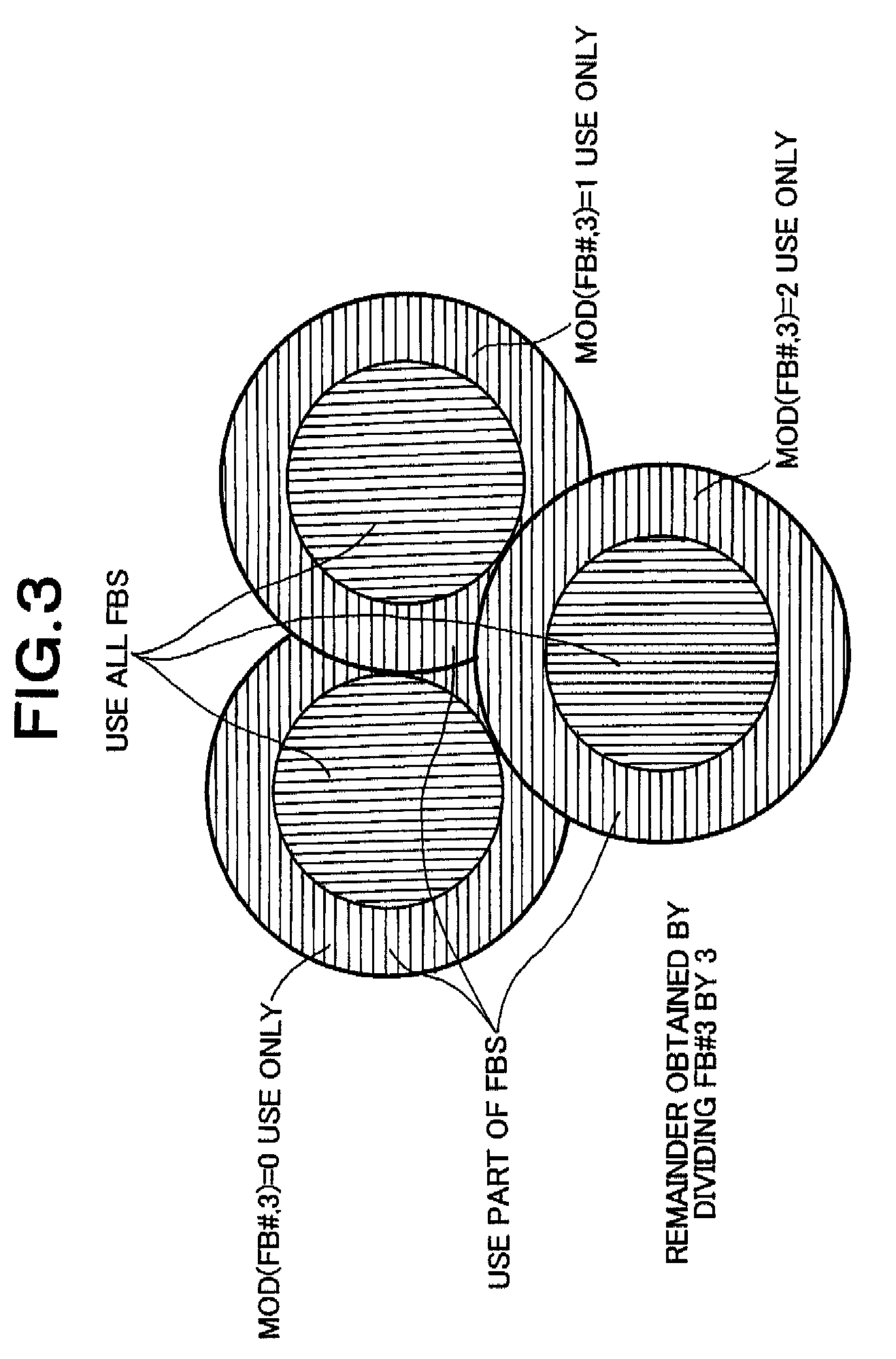Radio Communication Method and System Capable of Reducing Inter-Cell Interference, and Its Mobile Station and Base Station
- Summary
- Abstract
- Description
- Claims
- Application Information
AI Technical Summary
Benefits of technology
Problems solved by technology
Method used
Image
Examples
first embodiment
[0077]A generation method of the CQI used in the first embodiment will be described using FIGS. 9, 10, and 11.
[0078]The first embodiment is featured in that the mobile station selects FBs whose CQI are to be reported with the channel quality for adjacent base stations taken into consideration. When a difference between the average reception power of the pilot signal transmitted from a given base station in the system, which is measured at predetermined cycles by the target mobile station, and pilot reception quality of the SBS falls within a predetermined adjacent base station set threshold, the given base station is regarded as the adjacent base station.
[0079]FIG. 9 is a view showing a result obtained by measuring the SIR of the pilot signal transmitted from the SBS for each FB. In this case, FB9 exhibits the highest reception SIR. Based on the measurement result, the mobile station selects FBs (FB7, FB8, FB11, FB12, FB17, FB18, FB19, FB27) whose reception SIRs fall within a predet...
second embodiment
[0099]The configurations of the mobile station and base station in the second embodiment are the same as those in the first embodiment, and descriptions thereof will be omitted. The second embodiment differs from the first embodiment in the following points.
[0100]The mobile station in the first embodiment selects, from all FBs, a predetermined number of FBs to be reported in the descending order of the reception SIR quality. On the other hand, as shown in the flowchart of FIG. 16, the mobile station in the second embodiment previously receives a report FB set listing the FBs whose CQIs are to be reported from the base station (step S301). The mobile station measures the reception SIRs of the pilot signals from the SBS for the FBs belonging to the report FB set (step S305) to obtain CQIs and calculates interference level from the adjacent base stations and aggregate interference level according to the procedure described in the first embodiment (step S304). After that, the mobile sta...
third embodiment
[0106]FIG. 18 shows a relationship between the base stations and mobile stations in the third embodiment, and FIG. 19 shows a sequence step between the base stations and mobile stations. As shown in FIGS. 18 and 19, the present embodiment is featured in that the base station performs scheduling to determine the FBs to be used in data transmission and reports the determined FBs to the adjacent base stations and connected mobile stations as annunciation information.
[0107]A mobile station 211 connected to a base station 201 measures the reception quality of the respective FBs, selects five FBs in the descending order of the CQI level, and reports the CQIs to the base station 201 using the uplink control channel. The base station 201 determines to perform data transmission using FB3 to the mobile station 211 based on the CQI level and reports on the report channel that the FB3 is used for data transmission.
[0108]Here, it is assumed that a mobile station 212 connected to a base station 2...
PUM
 Login to View More
Login to View More Abstract
Description
Claims
Application Information
 Login to View More
Login to View More - Generate Ideas
- Intellectual Property
- Life Sciences
- Materials
- Tech Scout
- Unparalleled Data Quality
- Higher Quality Content
- 60% Fewer Hallucinations
Browse by: Latest US Patents, China's latest patents, Technical Efficacy Thesaurus, Application Domain, Technology Topic, Popular Technical Reports.
© 2025 PatSnap. All rights reserved.Legal|Privacy policy|Modern Slavery Act Transparency Statement|Sitemap|About US| Contact US: help@patsnap.com



